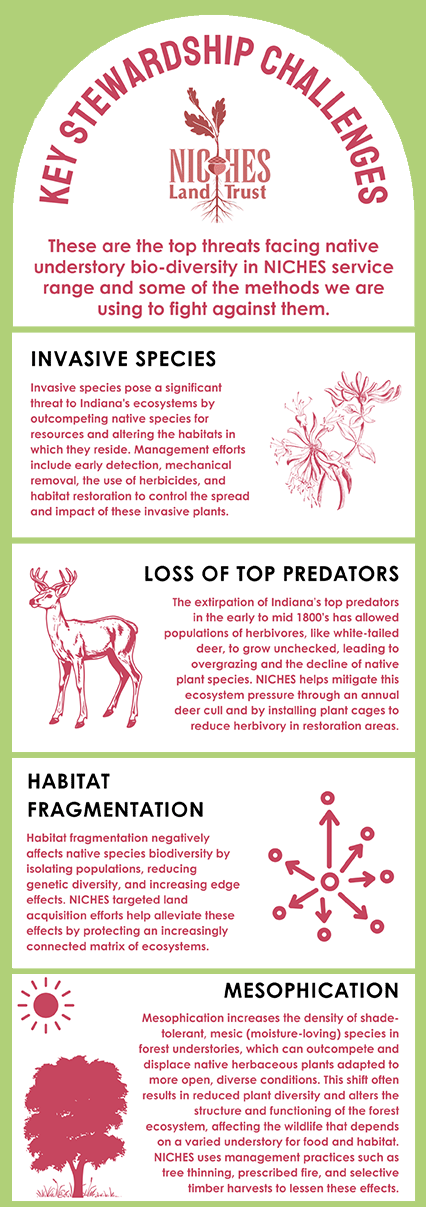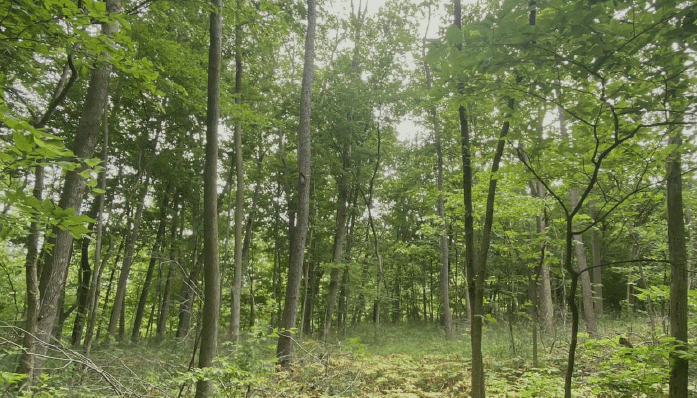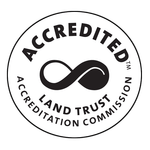News
Restoring Oak Woodlands
“I have watched as the work we have done has peeled back the layers of time and revealed the potential for recovery of quality open oak woodland. Now it is time to let the sun truly shine in these special places…” writes NICHES Stewardship Director Bob Easter.
NICHES’ stewardship program focuses on a key set of practices that address challenges facing our natural systems. Those challenges include invasive species, loss of top predators, fragmentation, and mesophication. Mesophication is the process whereby more xeric (dry) and sun-loving species are slowly replaced by more mesic (wet) and shade-tolerant species over time in the absence of natural disturbance regimes including fire. This can lead to significant loss of biodiversity and loss of oak woodlands. Practices that address mesophication include prescribed fire, thinning of shade-tolerant species like sugar maple from the understory and midstory of oak-hickory dominated woodlands, and reduction of canopy cover through thinning which can sometimes be accomplished through a management timber harvest.
 Invasive species management is a complex challenge that takes up the lion’s share of resources and must be engaged in early and often to move toward a stable ecological trajectory for our preserves. Loss of top predators is addressed through our deer cull program where each November volunteer hunting crews focus on reducing the local deer herd to relieve browse pressure on native plant populations. The challenge of fragmentation is met with a landscape-level approach to land acquisition and stewardship in which strategic priority acres are protected by expanding existing preserves and by working across boundaries with our neighbors to restore ecosystem processes.
Invasive species management is a complex challenge that takes up the lion’s share of resources and must be engaged in early and often to move toward a stable ecological trajectory for our preserves. Loss of top predators is addressed through our deer cull program where each November volunteer hunting crews focus on reducing the local deer herd to relieve browse pressure on native plant populations. The challenge of fragmentation is met with a landscape-level approach to land acquisition and stewardship in which strategic priority acres are protected by expanding existing preserves and by working across boundaries with our neighbors to restore ecosystem processes.
It is of paramount importance that all the above challenges are addressed to meet our strategic goal that NICHES’ conservation properties will be actively managed and protected in order to become and remain functional, high-quality, natural areas (i.e., be able to retain existing biodiversity for > 50 years). What that looks like from property to property can be very different.
Some preserves have significant invasive species issues which require sustained effort for years before you can begin to let in more light with understory thinning. Getting in a hurry to increase light while invasive species are still abundant can lead to exasperation of the issue. Sometimes invasive species are sparse enough across a site to get started with a combination of prescribed fire and understory thinning to awaken the native seed bank and begin reviving the health of the system. In this scenario we still need to be aware of invasive species, especially new and emerging threats that can reveal themselves as these practices are completed. Understory thinning is usually essential before removal of canopy trees because established mesic tree species in the understory will quickly respond with rapid growth and seed set upon being released from canopy shade. Management timber harvests are only considered for preserves that meet a strict set of criteria and are truly ready to respond positively to canopy reduction (see Williams Woods recent timber harvest).
NICHES has identified two areas which, after a decade of stewardship effort, are prime for a management timber harvest over the dormant seasons of 2024/2025: Shawnee Bottoms north upland woods and Potawatomi Trail. These preserves have a similar management history of widespread invasive removal including attention to seed sources outside of our boundaries, multiple prescribed fires, extensive understory thinning, and regular deer management. The results of this stewardship include revival of populations of many species in the herbaceous layer that are recovering with reduced leaf litter and shade, especially woodland grasses, sedges, and mid-late season forbs. Recovery of these species leads to an increase in soil tilth and subsequent increase in ant populations, which are responsible for dispersal of many of our spring ephemeral wildflowers.
Both target areas are under an easement with the DNR, and timber activities need to be approved through the Division of Nature Preserves to ensure that the projects are in line with the conservation goals; both sites have been approved for management harvest. Once the sites have reached management goals for pre-harvest, and clearance has been given by the DNR, NICHES works with a consultant forester to explain the goals of the harvest, desired final canopy cover, species to target and to exclude from harvest, plan for timing of the harvest, cutting, staging and removal of harvested trees. We walk the proposed harvest area with the consultant forester and they begin marking the timber, including numbered trees that will be posted for sale, ‘slash’ trees which we would like to see removed but have minimal value, and trees marked with a yellow line which means do not cut or damage in any way.
The goal with NICHES timber harvests is never to maximize income, but rather to control canopy composition and cover for maximum ecological benefit. The most commercially valuable timber trees are often not marked for harvest, because they are essential as seed trees to begin recruitment of a new generation of oaks and hickories which are disproportionately valuable to wildlife and keystone species of our forests and savannas. Even in an oak/hickory woodland that has seen invasive removal, understory thinning, and prescribed fire, regeneration of young oaks and hickories is still not possible with the canopy nearing 100% closure. To stimulate widespread oak regeneration, one option is to kill the trees in place, gradually releasing their stored carbon into the atmosphere, which would result in coarse woody debris thickly covering the preserve for years, without reaping the financial benefits of a harvest. Alternatively, selected trees could be harvested strategically, locking their stored carbon into forestry products for decades, and generating some income to reinvest into the management of the preserves.
I have personally given ample blood, sweat, and tears to these preserves over the last decade along with NICHES’ staff, partners, and volunteers. I have watched as the work we have done has peeled back the layers of time and revealed the potential for recovery of quality open oak woodland. Now it is time to let the sun truly shine in these special places. While we are careful about our approach to harvest including only working on dry or frozen days from October-March to protect bats and nesting birds and keep soil disturbance to a minimum, there will be temporary impacts to the sites from removal of the trees. In the end, the short-term impacts will be well worth it as we recover the health and structure of one of the most diverse woodland systems in the Midwest.
-- From NICHES Stewardship Director Bob Easter's Stewardship Updates featured in the 2024 Quarter 3 Issue of The Sprout



